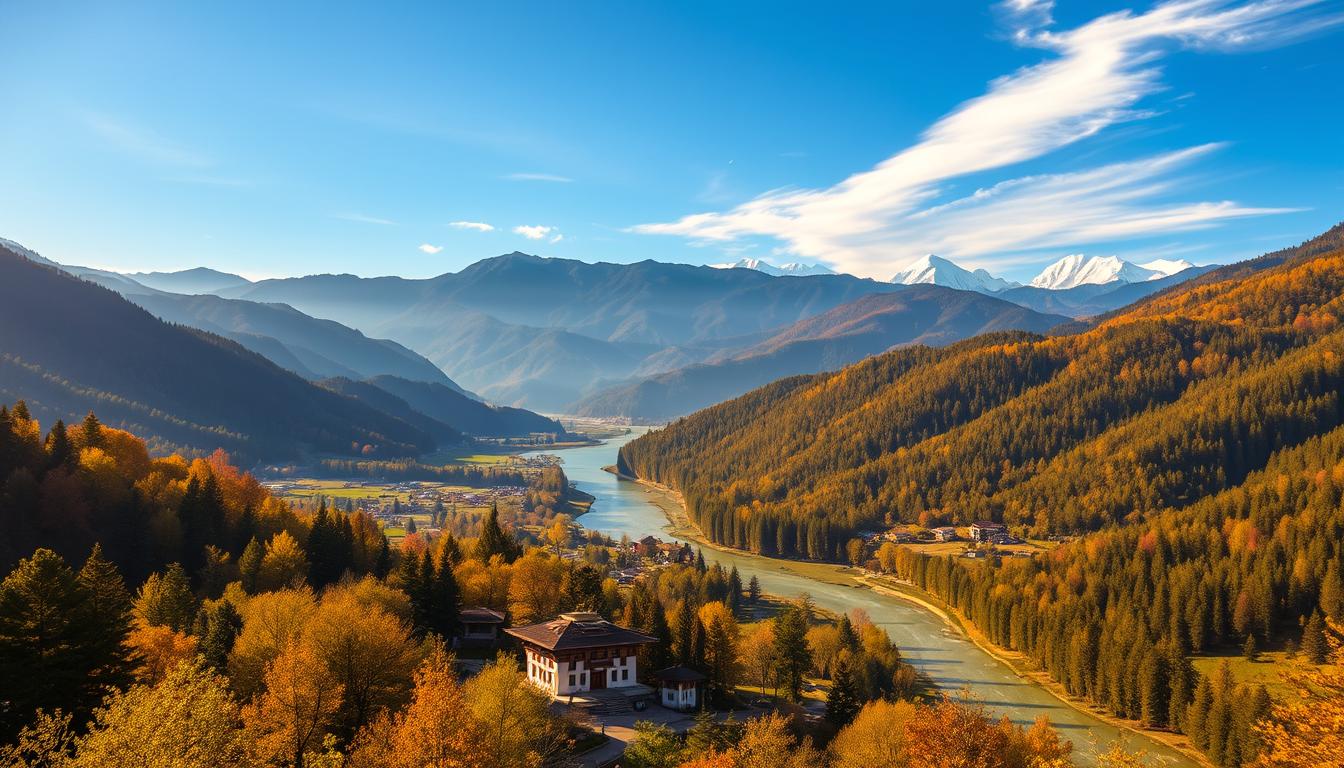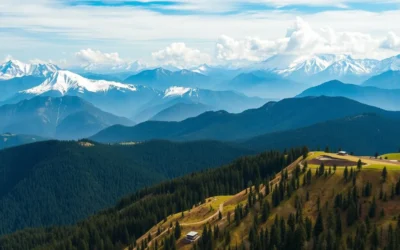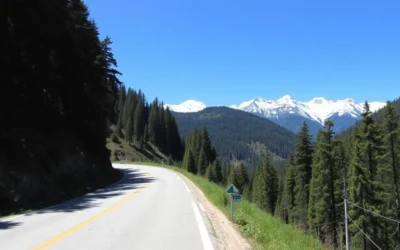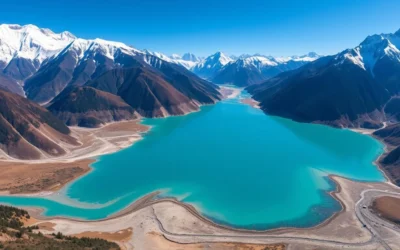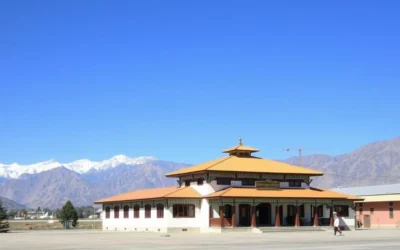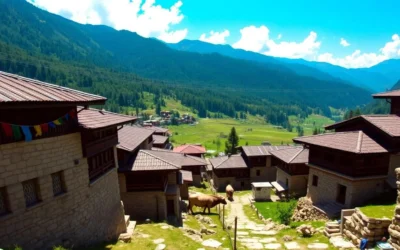✓ Accommodations✓ Flights✓ Rental Cars✓ Tours & Activities
Did you know that Bhutan is one of the few countries in the world where tourism is strictly controlled to preserve its culture and environment? Nestled in the Eastern Himalayas, this breathtaking country offers majestic landscapes, vibrant traditions, and a unique approach to travel.
Planning your trip to Bhutan involves more than just packing your bags. From securing a visa to understanding the local currency, this guide covers everything you need to know. The government mandates fixed daily fees and requires all visitors to book through authorized tour operators, ensuring a seamless experience.
Whether you’re exchanging money at the airport or navigating payment methods, we’ll help you prepare for a stress-free journey. Let’s dive into the essentials of traveling to this enchanting country.
Introduction to Bhutan Travel
From snow-capped peaks to lush valleys, this destination is a paradise for nature lovers. The varied climate ensures a unique experience depending on the season you visit. Spring and autumn are ideal, offering clear skies and vibrant landscapes.
The culture here is deeply rooted in tradition. Festivals, known as tsechus, showcase colorful costumes and ancient dances. These events provide a glimpse into the spiritual heart of this place.
Bhutan’s scenic beauty is unmatched. Rugged mountain ranges give way to fertile valleys, creating a diverse terrain. Whether you’re exploring a bustling city or a remote village, the views are breathtaking.
What makes this country truly unique is its commitment to preserving its heritage. From intricate architecture to traditional food, every aspect reflects a deep respect for history. Visiting a local restaurant offers a taste of authentic flavors.
“Bhutan is not just a destination; it’s a journey into a way of life that values harmony and sustainability.”
Planning your trip requires working with a licensed tour operator. This ensures a seamless experience while supporting the country’s sustainable tourism model. With careful preparation, your visit will be unforgettable.
Understanding Bhutan’s Currency System
Understanding the local currency system is a key part of planning your visit to this unique destination. The official currency is the Ngultrum (BTN), which is pegged to the Indian Rupee at a fixed rate. This means that 1 BTN equals 1 INR, and both currencies are widely accepted.
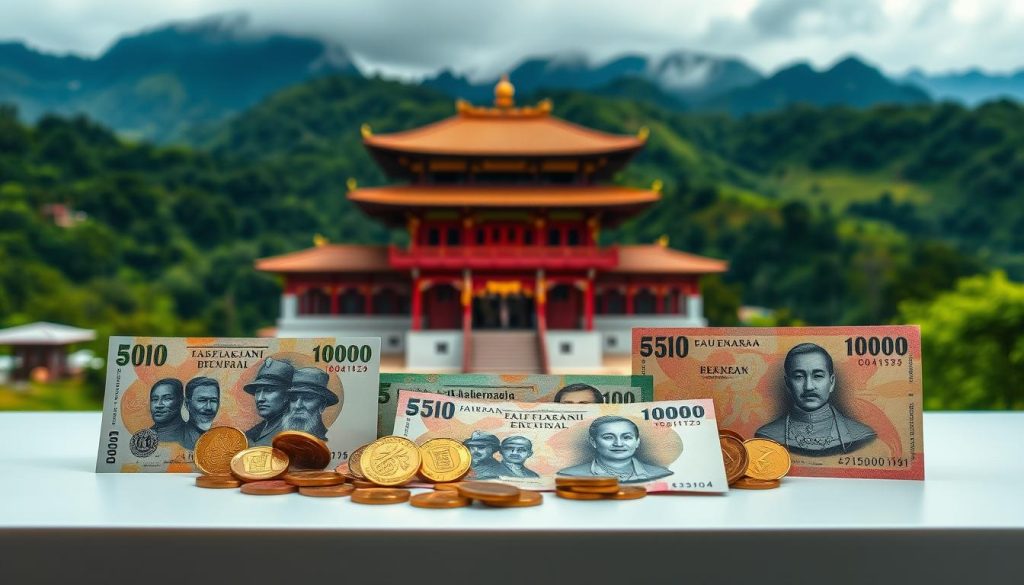
The Ngultrum & Its Link to the Indian Rupee
The Ngultrum’s peg to the Indian Rupee ensures stability in the system. However, Indian Rupee denominations above INR 500 are not accepted. This makes it essential to carry smaller bills or exchange your money accordingly.
Where to Exchange Money Before Arrival
Exchanging money before your trip can save you time and cost. Major banks and authorized money changers offer this service. While ATMs are available in cities like Thimphu and Paro, they are limited in number and may have specific operating hours.
Here’s a quick comparison of exchange options:
| Option | Pros | Cons |
|---|---|---|
| Banks | Reliable, secure | May have limited hours |
| Money Changers | Convenient, quick | Service fees may apply |
| ATMs | Widely available in cities | Limited in rural areas |
While credit and card payments are accepted in high-end establishments, cash remains the preferred method. Carrying some local currency ensures you’re prepared for all situations.
Payment Options in Bhutan
When planning your trip, knowing your payment options can make all the difference. Whether you’re exploring bustling cities or remote villages, understanding how to pay ensures a smooth experience.
Cash is the most widely accepted form of payment, especially in rural areas. Smaller establishments often prefer local currency, so carrying small denominations is advisable. Larger bills can be challenging to break in these regions.
Credit and debit cards are gaining acceptance, but their use is still limited. High-end hotels and restaurants in cities like Thimphu and Paro may accept Visa and Mastercard. However, a 3-5% surcharge often applies, so cash remains a cost-effective option.
Cash, Credit, and Digital Payment Methods
ATMs are available in urban areas, but their reliability can vary. Most machines accept cards with a 4-digit PIN and magnetic strips. Foreign cards are only accepted at select banks, so it’s wise to carry enough cash for daily needs.
Digital payment platforms like Google Pay and Apple Pay are not commonly used. This makes traditional methods like cash and cards the primary options. Working with a licensed tour operator can help you navigate these limitations.
Here’s a quick comparison of payment methods:
- Cash: Widely accepted, especially in rural areas.
- Cards: Limited to high-end establishments, with surcharges.
- ATMs: Available in cities, but reliability varies.
To minimize fees, plan your payments based on your itinerary. Carrying a mix of cash and cards ensures you’re prepared for any situation. Understanding the daily tariff structure can also help you budget effectively.
Choosing the best way to pay depends on your travel plans. In cities, cards and ATMs offer convenience. In remote areas, cash is essential. By planning ahead, you can enjoy a seamless and stress-free journey.
Managing Your Travel Budget in Bhutan
Planning your expenses for a trip to this unique destination starts with understanding the fixed tariff system. The government imposes a daily fee of approximately $200 per person, which covers most of your needs. This ensures a hassle-free experience while supporting sustainable tourism.
This fee includes accommodation, meals, transport, and a licensed guide. It’s an all-inclusive approach that simplifies budgeting. Knowing what’s covered helps you avoid unexpected costs during your trip.
Government Tariff Fees and All-Inclusive Packages
The daily fee is designed to provide a comprehensive experience. It includes stays at approved hotels, three meals a day, and private transport. Your tour operator will handle all arrangements, ensuring a seamless journey.
Here’s a breakdown of what’s typically included:
| Inclusions | Details |
|---|---|
| Accommodation | Stays at government-approved hotels or lodges |
| Meals | Breakfast, lunch, and dinner, featuring local cuisine |
| Transport | Private vehicles for sightseeing and transfers |
| Guide | A licensed guide for the duration of your stay |
By opting for these packages, you can focus on enjoying your travel experience without worrying about logistics. It’s a great way to explore the country while adhering to its sustainable tourism model.
To manage your budget effectively, consider traveling during off-peak seasons. Rates are lower, and popular sites are less crowded. Group tours can also reduce costs, as expenses are shared among participants.
“Understanding the fixed tariff system is key to planning a stress-free and enjoyable trip.”
By comparing different package options and times of travel, you can find the best fit for your needs. This ensures you get the most value for your money while experiencing the beauty and culture of this unique destination.
Exchanging Money: Where and How
Navigating the currency exchange process in this Himalayan destination is straightforward with the right preparation. Whether you’re arriving by flight or exploring a bustling city, knowing where and how to exchange money ensures a smooth experience.
ATMs, Banks, and Money Changers
ATMs are available in urban areas like Thimphu and Paro, but their numbers are limited. The Bank of Bhutan operates multiple ATMs in these cities, allowing withdrawals up to Nu.10,000 per transaction. However, rural areas have fewer options, so plan accordingly.
Banks are another reliable option, though their operating hours are limited. Most banks are open from 9 am to 1 pm, Monday to Saturday. They offer competitive exchange rates and accept major currencies, except USD 100 notes printed in 1996.
Money changers provide a convenient alternative, especially if you’re short on time. They are often located near tourist hubs and offer quick services, though fees may apply. Notify your bank before using international ATMs to avoid transaction issues.
Here’s a quick comparison of exchange options:
| Option | Pros | Cons |
|---|---|---|
| ATMs | Convenient, available in cities | Limited in rural areas |
| Banks | Reliable, competitive rates | Limited operating hours |
| Money Changers | Quick, accessible | Service fees may apply |
Traveling between cities can take several hours, so plan your cash needs in advance. Carrying a mix of local currency and cards ensures you’re prepared for any situation. Your tour operator can also assist with logistics, making your trip hassle-free.
Here are some tips for securing your funds:
- Notify your bank before international ATM use.
- Carry smaller denominations for rural areas.
- Use ATMs during daylight hours for safety.
- Keep a record of exchange rates and transactions.
By understanding these practicalities, you can focus on enjoying your travel without financial worries. Proper preparation ensures a seamless and enjoyable experience in this unique destination.
Bhutan: Ultimate Travelers Guide to Currencies & Payments
Exploring the financial aspects of your journey ensures a smooth and enjoyable experience. This country offers a unique approach to travel, with its fixed tariff system and emphasis on sustainable tourism. Understanding the local payment methods and currency exchange process is essential for a hassle-free trip.

The government mandates a daily fee of approximately $200 per person, which covers accommodation, meals, transport, and a licensed guide. This all-inclusive approach simplifies budgeting and ensures high-quality tourism standards. By working with authorized tour operators, you can focus on enjoying your travel experience without worrying about logistics.
Proper planning is key when it comes to using local payment methods. While cash is widely accepted, especially in rural areas, credit cards are gaining traction in cities like Thimphu and Paro. ATMs are available but limited, so carrying some local currency is advisable. Smaller denominations of Indian Rupees are preferred, as larger bills may not be accepted.
Here are some essential takeaways to keep in mind:
- The Ngultrum (BTN) is the official currency, pegged to the Indian Rupee at a 1:1 ratio.
- Exchanging money before your flight can save you time and effort.
- Plan your budget carefully, considering the fixed tariff and daily expenses.
- Carry a mix of cash and cards to ensure you’re prepared for any situation.
By understanding these details, you can make the most of your travel experience. Whether you’re exploring vibrant cities or serene valleys, proper financial planning enhances every moment of your journey.
Tips for Secure and Smart Spending
Ensuring your financial safety while traveling is as important as planning your itinerary. As a first-time visitor, you’ll want to focus on smart spending practices to avoid common pitfalls. This guide provides practical advice to help you stay financially secure throughout your trip.
Preventing Fraud and Staying Financially Safe
Protecting your card and personal information is crucial. Avoid using ATMs at night or in isolated areas. Always shield your PIN and check for skimming devices. Notify your bank before your travel to prevent unexpected card blocks.
When exchanging money, stick to reputable banks or authorized money changers. Avoid dynamic currency conversion (DCC) at ATMs or merchants, as it often comes with hidden fees. Keep a secure record of daily expenses using budgeting apps like Mint or YNAB.
Here’s a quick comparison of secure spending practices:
| Practice | Benefit |
|---|---|
| Use ATMs during the day | Safer and more reliable |
| Notify your bank before travel | Prevents card blocks |
| Avoid DCC | Saves on hidden fees |
| Use budgeting apps | Tracks expenses in real-time |
When dining at a restaurant or shopping, keep your card in sight to prevent unauthorized charges. Verify the authenticity of tour operators by checking their licenses and reviews. This ensures you’re working with professionals who prioritize your safety.
By following these tips, you can enjoy your trip without financial worries. Secure spending practices not only protect your money but also enhance your overall travel experience.
Navigating Visa and Payment Procedures
Securing your visa is the first step to unlocking an unforgettable journey. This process is straightforward but requires careful preparation. Working with a registered tour operator ensures everything is handled efficiently.
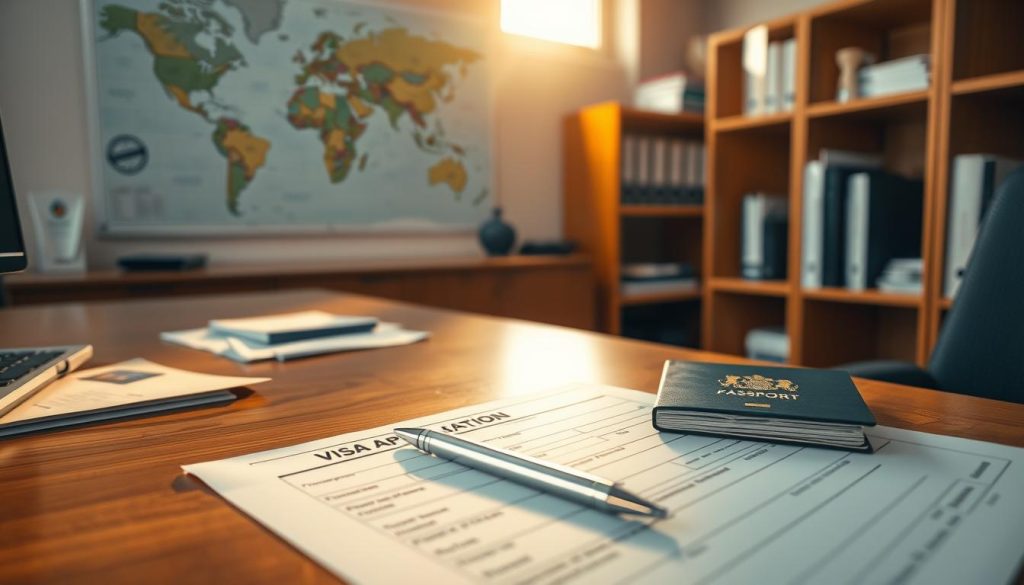
The Visa Application Process and Financial Documentation
To apply for a visa, you’ll need to book your trip through an authorized tour operator. They will handle the application and submit it on your behalf. The fee for the visa is $40 per person, which is non-refundable.
Processing typically takes 3-5 working days, but it’s wise to apply at least 7 days before your flight. This allows extra time for any unexpected delays. Your guide and tour operator will assist with any questions during this process.
Here’s what you’ll need for your application:
- A scanned copy of your passport.
- Proof of payment for the visa fee.
- Details of your pre-booked travel package.
By preparing these documents in advance, you can ensure a smooth application process. This sets the stage for a stress-free travel experience.
Once your visa is approved, you’ll receive an electronic copy via email. Print this out and carry it with you during your flight. It’s also a good idea to keep digital copies on your phone for easy access.
Your tour operator will guide you through the final steps, including payment of the Sustainable Development Fee. This fee supports the country’s commitment to sustainable tourism and is included in your daily tariff.
With these steps completed, you’re ready to embark on your adventure. Proper preparation ensures a seamless start to your journey in this unique country.
Using Credit Cards, ATMs, and Travelers’ Cheques
Choosing the right payment method can make your journey smoother and more enjoyable. Whether you’re dining at a hotel, shopping at a local festival, or exploring with a guide, understanding your options ensures convenience and security.
Where and When to Use Each Payment Method
Credit cards are widely accepted in cities like Thimphu and Paro, especially at high-end establishments. However, smaller shops and rural areas often prefer cash. Always check for surcharges, which can range up to 5%.
ATMs are available in urban centers but are limited in number. Most accept international cards with a 4-digit PIN. Withdrawals are typically capped at Nu.10,000 per transaction, so plan accordingly.
Travelers’ cheques are a reliable option, accepted at banks and major hotels. Brands like American Express are recommended for ease of use. Keep receipts for currency exchange when leaving the country.
Here’s a quick comparison of payment methods:
| Method | Best For | Limitations |
|---|---|---|
| Credit Cards | High-end hotels, restaurants | Surcharges, limited rural acceptance |
| Cash | Rural areas, small shops | Limited ATM access |
| Travelers’ Cheques | Secure, accepted at banks | Less convenient for daily use |
To maximize efficiency, carry a mix of cash and cards. Notify your bank before your trip to avoid transaction issues. This ensures you’re prepared for any situation during your travels.
By understanding these options, you can navigate the local system with ease. Whether you’re enjoying a meal or exploring the world, the right payment method enhances your experience.
Essential Financial Advice for First-Time Visitors
Managing your finances effectively is key to a stress-free travel experience. As a first-time visitor, understanding the local financial landscape ensures you’re prepared for any situation. Working with a trusted tour operator is a great way to simplify the process, from securing your visa to managing daily expenses.
One of the most important aspects of planning your trip is budgeting for the fixed daily fee. This fee covers accommodation, meals, transport, and a licensed guide, ensuring a hassle-free experience. By knowing what’s included, you can avoid unexpected costs and focus on enjoying your journey.

Monitoring your expenses is another crucial step. While meals at local restaurants are affordable, dining at high-end hotels can add up. Carrying small denominations of local currency is advisable, especially in rural areas where cash is preferred. This ensures you’re prepared for every meal and activity.
Here are some practical tips to help you manage your funds effectively:
- Work with a licensed tour operator for visa and booking arrangements.
- Budget for the daily fee and additional expenses like souvenirs or extras.
- Carry a mix of cash and cards to ensure flexibility in payment methods.
- Verify payment options at your hotel and other establishments to avoid surprises.
“Smart financial planning ensures you can focus on the experience, not the expenses.”
By following these tips, you can make the most of your trip while staying within your budget. Proper preparation ensures a seamless and enjoyable experience in this unique country.
Additional Cost Insights and Value for Your Money
Planning your expenses wisely can make your journey both enjoyable and affordable. Understanding the cost breakdown for meals, accommodations, and extras ensures you get the most out of your trip. Here’s how to manage your budget effectively while exploring this unique destination.
Budgeting for Meals, Accommodations, and Extras
Your daily cost includes three meals, typically featuring local food like Ema Datshi, a spicy chili and cheese dish. While most packages cover these, dining at high-end hotels or trying specialty dishes may incur additional charges. Planning your meal options in advance helps you stay within budget.
Accommodation is another key part of your expenses. Government-approved hotels are included in the daily fee, but upgrading to luxury stays or private lodges can increase costs. Traveling during the off-peak year or exploring the south can offer more affordable options.
Here’s a quick breakdown of typical expenses:
| Category | Cost |
|---|---|
| Meals | Included in daily fee |
| Accommodation | Standard stays covered |
| Extras | Activities, souvenirs, upgrades |
To maximize value, consider these tips:
- Travel during off-peak seasons for lower rates.
- Choose local food over imported dishes to save money.
- Book group tours to share expenses.
“Smart budgeting ensures you can focus on the experience, not the expenses.”
By understanding the system and planning ahead, you can enjoy every way of your journey, from the bustling cities to the serene mountain valleys. Whether you’re exploring the south or the highlands, these insights help you make the most of your trip.
Planning Your Travel Itinerary and Currency Needs
Designing your travel plans involves more than just picking destinations; it’s about aligning your budget with your experiences. From flight costs to local expenses, every detail matters. A well-thought-out itinerary ensures you make the most of your trip without overspending.
Understanding Flight Costs and Local Expenses
Flights to this destination can vary depending on the year and season. Booking early often saves money, especially during peak tourism months. Once you arrive, local expenses like transportation and meals should be factored into your budget.
Choosing the right hotel is crucial. Opt for accommodations that balance comfort and cost. Staying in the east might offer unique cultural experiences but could also mean higher travel expenses.
Here are some tips to help you plan:
- Book flights and hotel stays in advance to secure better rates.
- Schedule your nights to coincide with local festivals for a richer experience.
- Be prepared for varying costs at the airport and in different regions.
“A well-planned itinerary ensures you enjoy every moment without worrying about unexpected costs.”
By mapping out your travel plans, you can focus on the experience rather than the logistics. Whether you’re exploring bustling cities or serene valleys, proper preparation enhances every moment of your journey.
Conclusion
Embarking on a journey to this unique country requires careful planning and preparation. From securing your visa to understanding local payment methods, every detail matters. Working with a trusted guide or tour operator ensures a seamless experience, allowing you to focus on the adventure ahead.
Budgeting is key to making the most of your trip. The fixed government tariffs cover essentials like accommodation and meals, but knowing additional costs for activities or upgrades helps you plan better. Whether you’re exploring the east or enjoying a traditional cheese dish, proper financial preparation enhances every moment.
As you organize your itinerary, from airport transfers to attending a vibrant festival, use this guide as your reference. Embrace the blend of culture, tradition, and modern payment methods to make your journey unforgettable. With the right planning, you can confidently explore this mountainous paradise and create lasting memories.
The above is subject to change.
Check back often to TRAVEL.COM for the latest travel tips and deals.
